Near East Discoveries, Part 1

The Near East is full of treasures: oil, frankincense, jewelry, World Heritage sites, palm trees, camels, dates. I found all these and more–and not just stuff, but treasured times of enlightenment and even, exaltation. My trip through 7,800 years of Near East history began January 11 in Tel Aviv. There I met Marjo van Patten, my friend since first grade and frequent travel companion, and eighteen other members of a group that would join three other groups on a Grand Circle Cruise. Soon we would visit pyramids in Egypt, Petra in Jordan, and sacred places in Israel I’d heard about all my life. Scroll to the end of this post for a map of our Suez Crossing, a grand circle around Israel and the Sinai Peninsula.
Revital Shnaider, our guide through Israel, won my heart by giving each of us the bookmark pictured at the left, which neatly depicts sixteen periods of history. Chalcolithic, Hasmonean and Mameluke were new terms to me. Reading James Micherner’s The Source (lengthy, but compelling) every night helped me understand the layers of archeology in Israel. The Ministry of Foreign Affairs has published a more detailed timeline. Later we saw scenes from each period projected on the Tower of David Citadel in Jerusalem in a truly spectacular sound & light show: from shepherd boy David through the Greeks, Romans, Muslims, Crusaders, and the distinctive ablaq architecture of the Mamelukes.
Our first walking tour was in Jaffa, the oldest section of Tel Aviv, dating back to the Canaanites. All I had known about Jaffa was its oranges. I had much to discover:
- a sweet display in St. Peter’s Church showed the universality of Nativity scenes,
- the myth that the rocks in Jaffa harbor represent the remains of a monster that Perseus cast down when he rescued Andromeda, bound to a rock in the sea. Andromeda’s boastful mother was Cassiopeia, also a favorite constellation of mine.
- a vibrant market where we drank juice fresh-squeezed from Jaffa oranges and I found a perfect beach dress.
- Abdul Hamid II, final Sultan of the Ottoman Empire, tried to modernize this land by extending telegraph and rail systems. The Jaffa Clock Tower commemorates the 25th anniversary of his rule. There’s more to learn about Hamid, his thirteen wives, his seventeen children, and the Young Turks who deposed him.
- A contrasting section of Tel Aviv, the “White City,” with a large number of Bauhaus structures built in the 1930s, is a World Heritage Site.
By bus we journeyed up the coast to Caesarea, an Israeli National Park that preserves remains of the seaport and palace that King Herod built 2000 years ago to impress his patron, Caesar Augustus. It became an important stop on the sea route between Cairo and Constantinople. From a perch in an old Roman theater, Ravi told stories of Roman exploits and how Herod killed his second wife Mariamne, and preserved her in a large jar of honey! [Click on photos to enlarge.]
Our group shared lunch that day with the Samy family, Arab Israelis living in the Wadi Nisnas neighborhood in Haifa, an ancient seaport on the slopes of Mount Carmel. With Grand Circle support, Samy’s mother cooked a lovely spread of local food, while her son told us about his coffee business, his Christian neighbors, and how three generations of his family live together in a three story house and pray at the neighborhood mosque.
Our next discovery in Haifa was the Baha’i Gardens, another World Heritage Site and headquarters of a faith founded in Iran in 1844. The gardens cascaded down Mount Carmel in a succession of beautifully-landscaped terraces. A Baha’i follower in Florida once told my women’s group about this peaceful faith. Israel is more than Jews and Muslims. It is a rich stew of Coptic Christians, Druze, Greek Orthodox, Armenians, Mormons, Baha’i, atheists, and more. In Haifa, they co-exist.
In the evening we boarded the Clio, an 89-passenger Grand Circle ship. The crew welcomed us warmly and we found our quarters commodious, much like the Viking River ship in which Steve and I explored the Rhone River in 2016. The next morning, appropriately a Sunday, we disembarked to visit the Sea of Galilee. At last I could see for myself the place where Jesus recruited his Disciples and where he preached, using parables that continue to convey the most loving and honorable way to live. Here were the sets for the Bible stories I have told and sung with children in Sunday School and Vacation Bible School over the last forty years.
What I felt at Galilee was not exaltation, but affirmation. If these stories have been half as meaningful for the kids I have taught, as they were for me that morning, then my efforts have been worthwhile. Perhaps I will now be better able to make the Sermon on the Mount (Matthew 5.1-12) and the Feeding of the Five Thousand (John 6: 1-14) come alive. After the light rain at Capernaum came a moment of exaltation, a beautiful triple rainbow recalling God’s promise after the Flood.
That day’s lunch was at Ortal Kibbutz. General Manager Slava told us about their 120 members, forty of whom grow the food we ate and take care of the children. Eighty other members of the kibbutz work elsewhere, but all share their earnings.
Next we drove to Mount Bental (altitude 3, 811 feet) in the Golan Heights of northern Israel. Formerly a part of Syria, the Golan Heights were occupied by the Israelis during the Six-Day War of 1967 and were the site of intense fighting during the Yom Kippur War of 1973. The border is still patrolled by UN troops. In this January 30 column in the New York Times, Tom Friedman calls the Golan Heights the “second most dangerous place on the planet–after the Korean Peninsula.” But we saw few soldiers and heard no shots. Many friends back home had expressed concern about my safety on this trip; no one in our group felt a moment of fear.
That night we bid a temporary farewell to Revi; we will return to her on Days 15 and 16 to see Jerusalem. Amin Sirag, our Egyptian guide, matched Revi in enthusiasm for his country. On Day 6 we sailed on the Clio from Haifa, Israel in Asia to Port Said, Egypt in Africa. Soon we would approach Cairo, exactly seven years after the beginning of the “Arab Spring.” More danger? doubtful. More discoveries? of course! Here I end Part One with many miles to go. This is the map of our Suez Crossing: blue, if by sea; red, if by land or air.
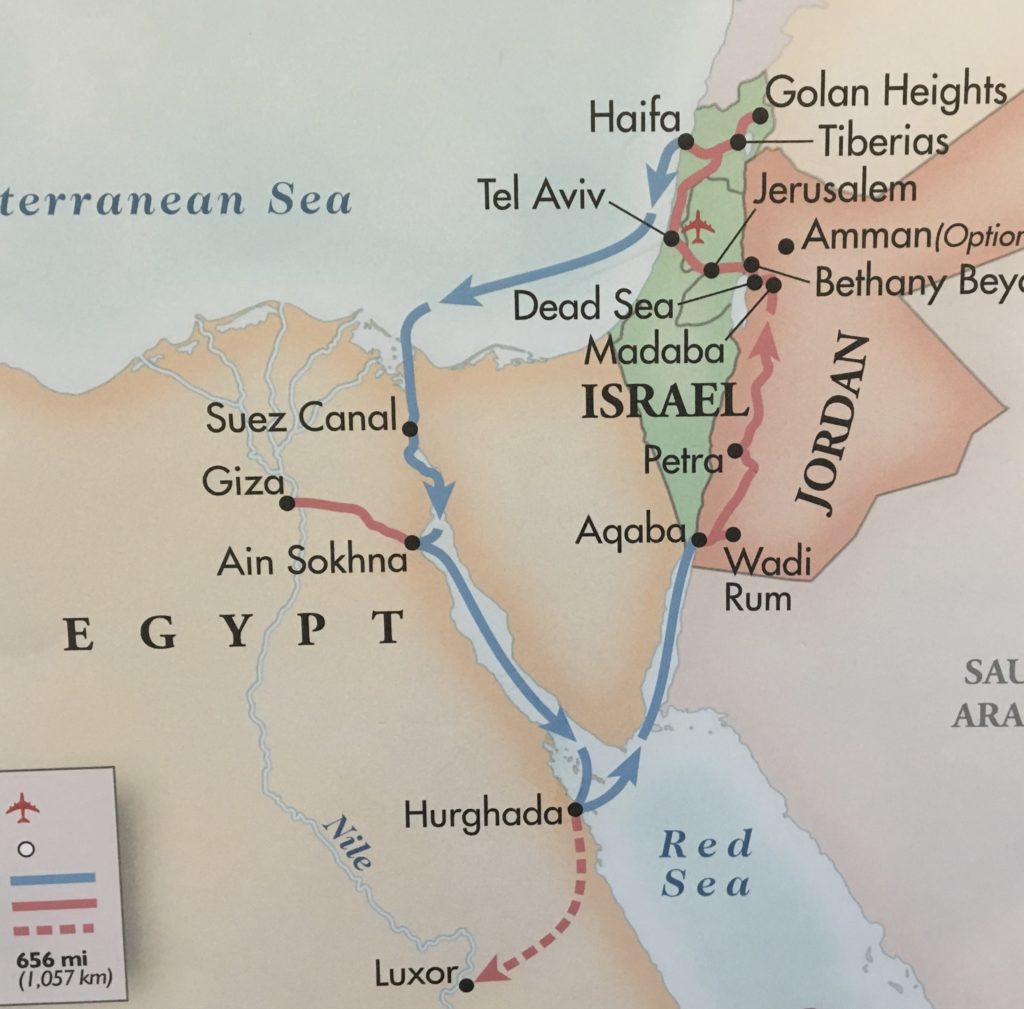
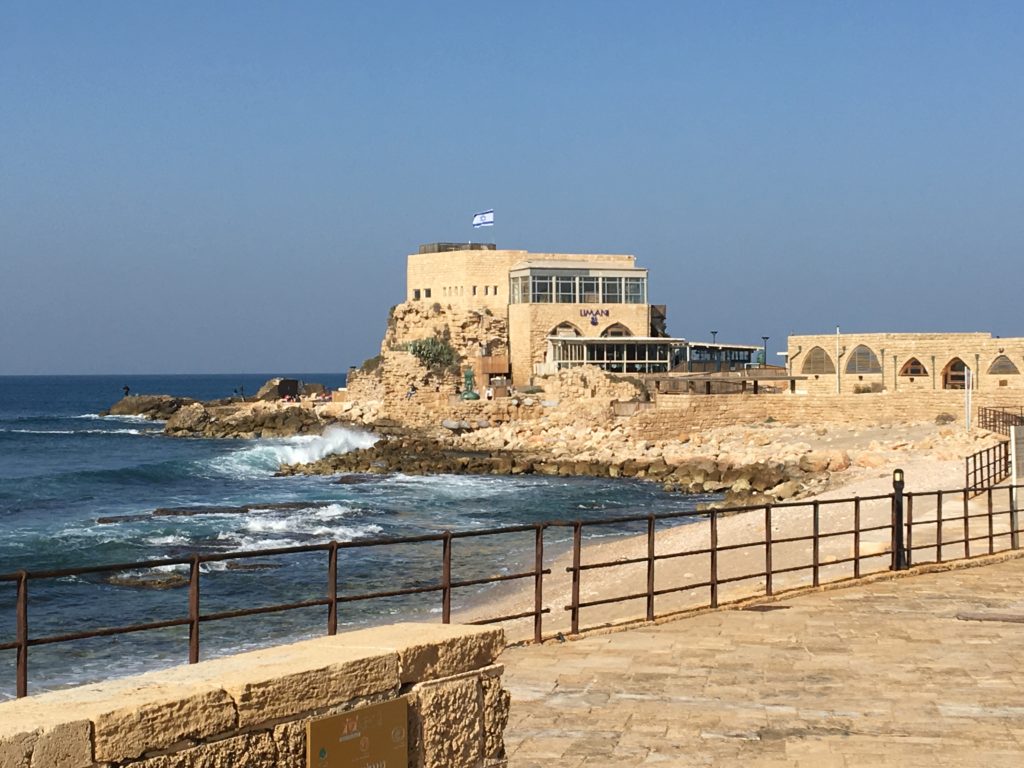

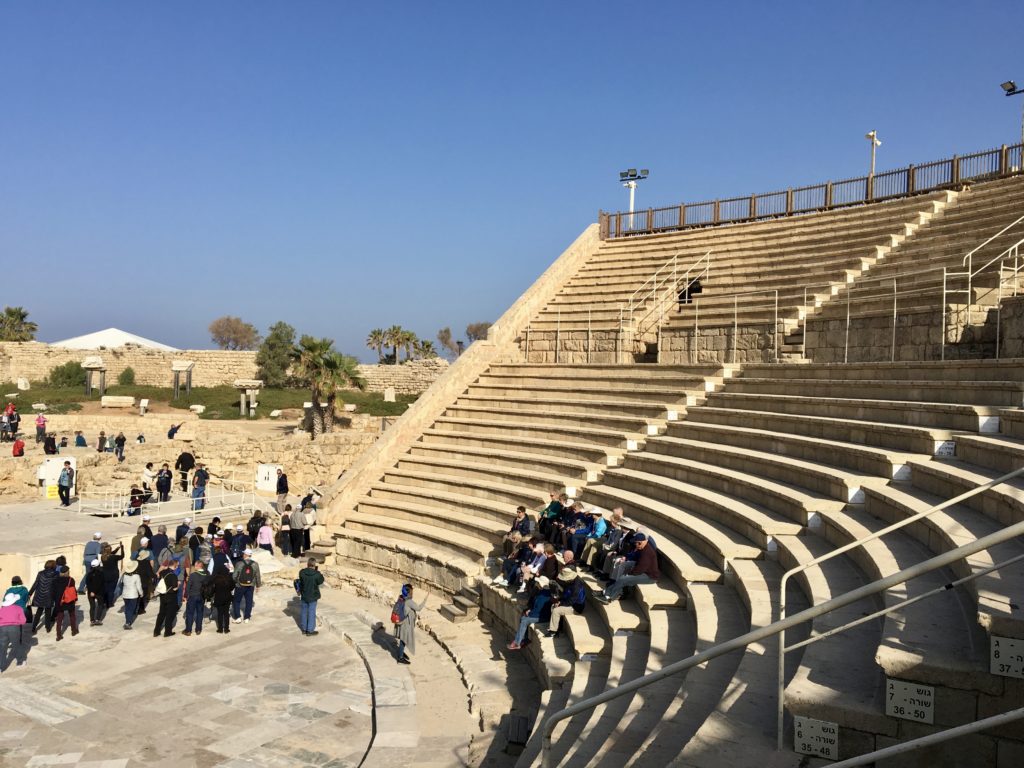
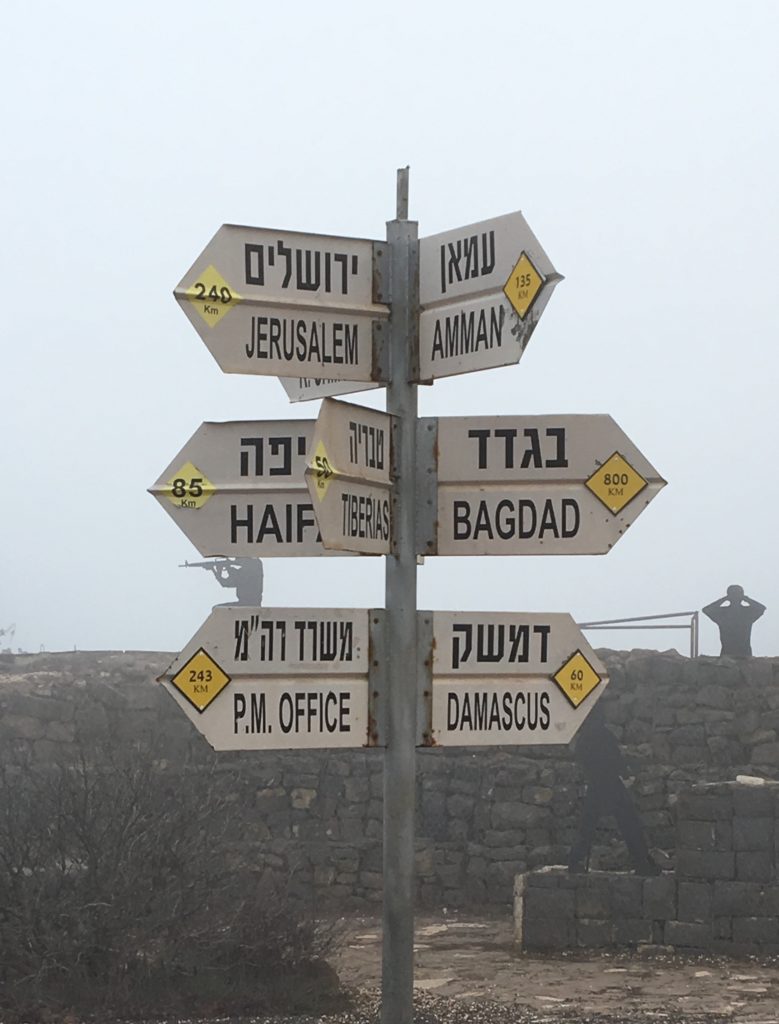
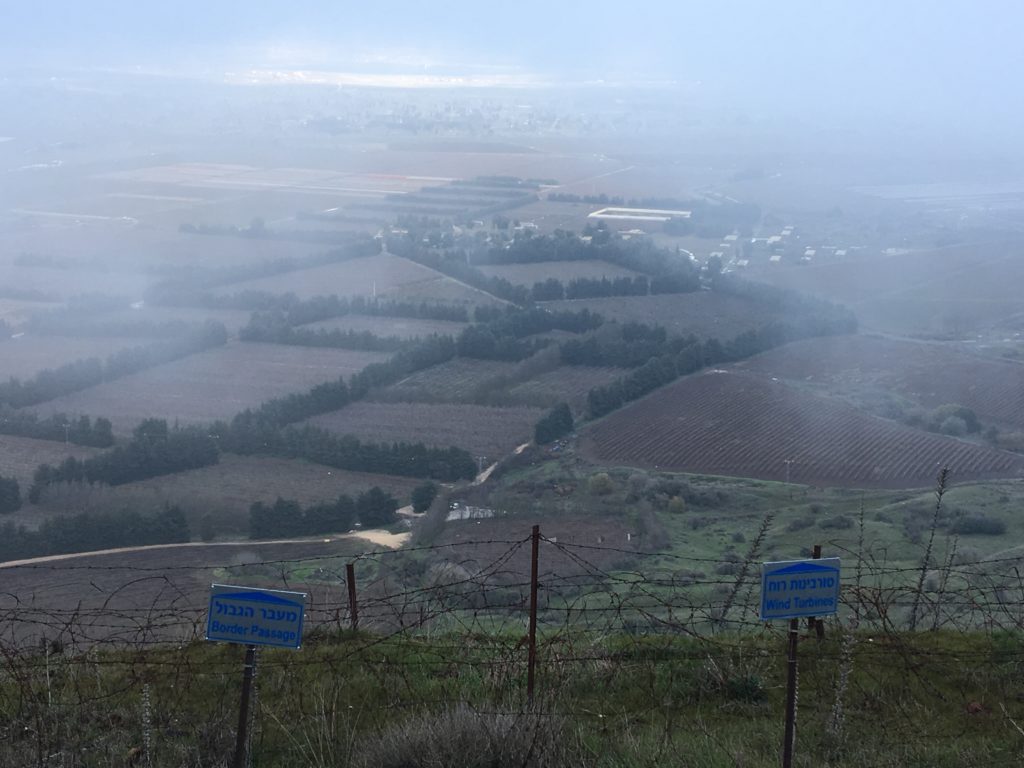
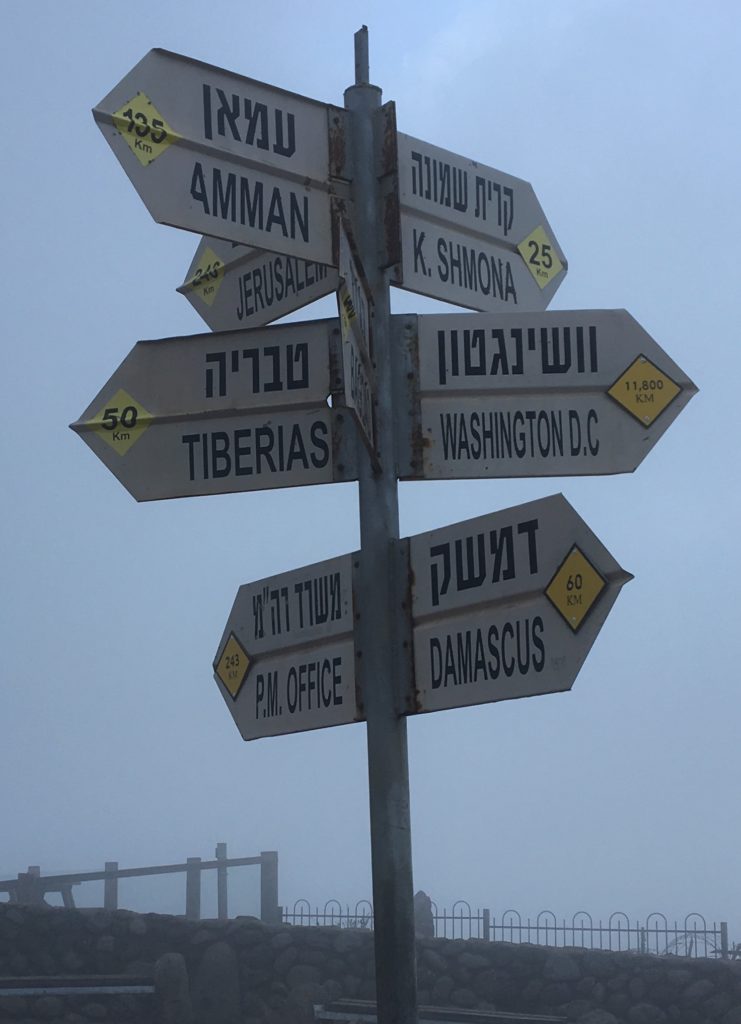
Leave a Reply